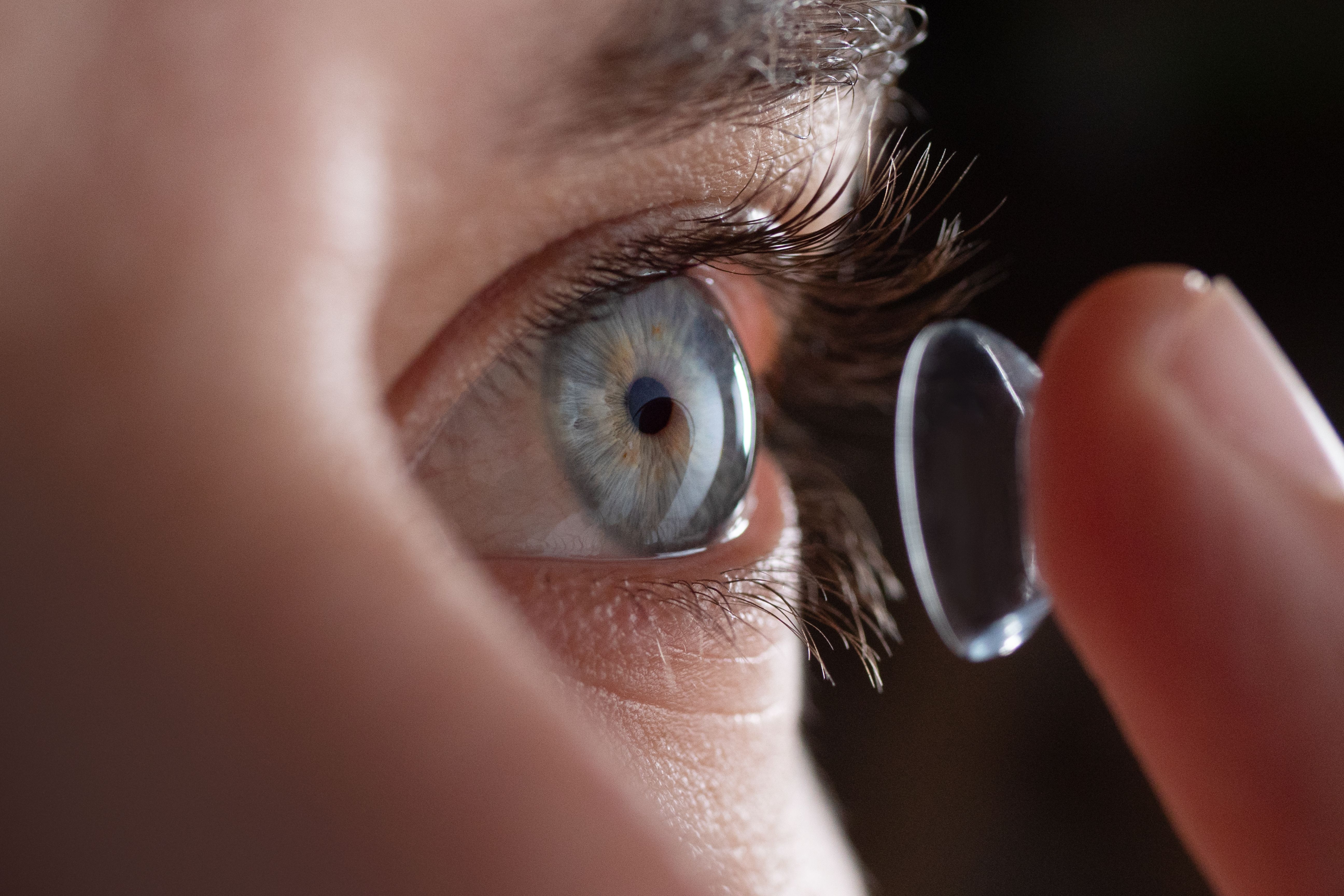- Center on Health Equity & Access
- Clinical
- Health Care Cost
- Health Care Delivery
- Insurance
- Policy
- Technology
- Value-Based Care
Visual Acuity, OSDI Improved With Use of Hydrogen Peroxide in Dry Eye Caused by Contacts
Patients with dry eye associated with contact lenses had significant improvement in visual acuity and their Ocular Surface Disease Index (OSDI) score after a month of using hydrogen peroxide.
Patients with dry eye disease associated with contact lenses (CLADE) were able to improve their visual acuity (VA) and Ocular Surface Disease Index (OSDI) score through the use of hydrogen peroxide for a month, according to a study published in PeerJ.1 This result may help curb dropout rate for contact lens users.
Dropout rate for contact lenses remains high due to several factors, including discomfort, dryness, blurred vision, and redness. CLADE can happen as a product of reduced stability of tear film due to continued use of contact lenses.2 Cleaning contact lenses can help to mitigate this issue. This study aimed to assess whether hydrogen peroxide would help to improve CLADE when used to clean contact lenses rather than the use of multipurpose solution.
Cleaning contact lenses with hydrogen peroxide could help with symptoms of dry eye due to contact lenses | Image credit: Kitreel - stock.adobe.com

This study recruited patients from 9 General Optica centers in Spain. All patients used either Biofinity, Air Optix Aqua, or other forms of contact lenses for more than a year; all patients cleaned their lenses using multipurpose solution. All patients also were living with CLADE. This was defined as those who scored more than 13 on the OSDI questionnaire and had symptoms of dryness, sensing a foreign body, eye strain, and blurred vision that got worse throughout the day. Patients were excluded if they had vision impairment, ocular surgery, were pregnant or breastfeeding, or had systemic or eye pathology.
All participants had an eye exam that measured VA with contact lenses, a detailed anterior segment evaluation with biomicroscopy, completion of the OSDI questionnaire, and subjective refraction if necessary. VA, gender, years using contact lenses, refractive error, the amount of time spent wearing contact lenses, and age were all collected from the participants. Higher scores on the OSDI scale, which is rated out of 32, indicated more symptoms of dry eye.
There were 38 participants in this study, of which 27 were women. Patients who had been using contact lenses for 16 years had a greater mean (SD) age (44.55 [8.17] vs 32.30 [10.56] years), had more hours of use per day (6.66 [0.68] vs 5.75 [1.29]), and had a lower final OSDI score (5.72 [4.04] vs 9.50 [8.12]).
The use of hydrogen peroxide led to an improvement in all parameters of VA, bulbar hyperemia, and the OSDI questionnaire. VA improved in the total sample of participants (P < .04), in participants who had used contact lenses for more than 16 years (P = .02), in participants who had felt discomfort for less than 1 year (P = .03), in participants who use contact lenses for less than 8 hours per day (P < .04), and in women (P < .03). There was statistically significant improvement of bulbar hyperemia after use of hydrogen peroxide for 1 month in all but men and the multifocal contact lenses group but this significance disappeared when hyperemia was analyzed as a dichotomous variable.
Although the total OSDI score improved in all groups, the ocular symptoms subscale did not have any significant improvement in patients who had been using contact lenses for less than 16 years, in patients who were less than 40 years of age, and those who used multifocal contact lenses and been in discomfort for a year. The environmental triggers subscale and the VRF subscale both improved after 1 month of hydrogen peroxide.
There were some limitations to this study. There was a small sample size of both men and users of multifocal contact lenses. There was only 1 month of follow-up time. There was no control for the day of the contact lens use cycle.
These results, wrote the researchers, could help to give a standard protocol to improve a patient’s symptoms of CLADE. “Changing the cleaning regime from a multipurpose solution to hydrogen peroxide would be a simple and effective action for all those with an OSDI score superior to 13 points,” the authors concluded.
References
- Castro S, Garcia-Aguilar L, Garcia-Brion E, et al. Improvement of contact lens-associated dry eye disease with the use of hydrogen peroxide. PeerJ. 2024;12:e18482. doi:10.7717/peerj.18482
- Weber B. How to treat dry eyes from contact lenses. MedicalNewsToday. April 25, 2023. Accessed December 10, 2024. https://www.medicalnewstoday.com/articles/how-to-fix-dry-eyes-from-contacts
